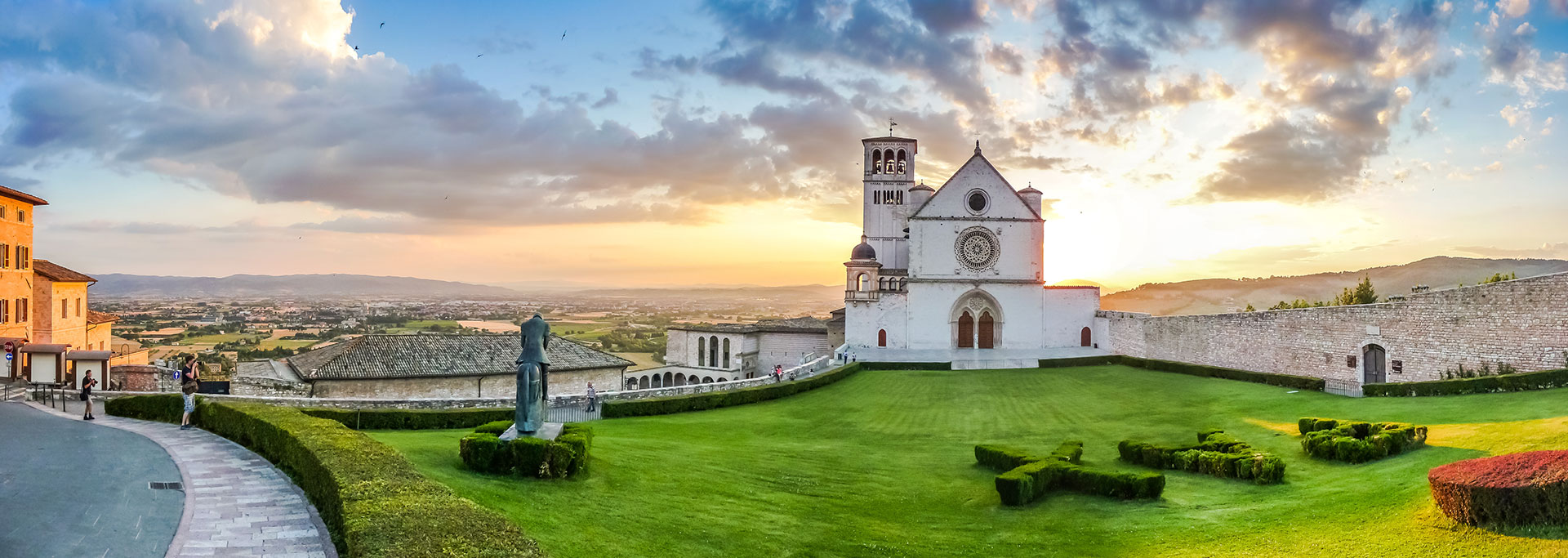The Basilica of San Francesco: A Timeless Testimony of Faith and Art
Commissioned by Pope Gregory IX as a “specialis ecclesia” through the papal bull Recolentes on April 29, 1228, the Basilica of San Francesco has safeguarded the mortal remains of Saint Francis of Assisi since 1230. With the papal bull Is qui Ecclesiam issued on April 22, 1230, the same Pope conferred upon the Basilica the title of Caput et Mater of the Franciscan Order, entrusting its perpetual care to the “friars of the community,” who later formed the Order of Friars Minor Conventual.
This prestigious title, Caput et Mater, was reaffirmed by Pope Benedict XIV in the apostolic constitution Fidelis Dominus on March 25, 1754, when the Basilica was elevated to the dignity of a Patriarchal Basilica (renamed “Papal Basilica” in 2006) and designated as a Papal Chapel. More recently, Pope Paul VI reiterated this recognition in the apostolic letter Inclita toto on August 8, 1968.
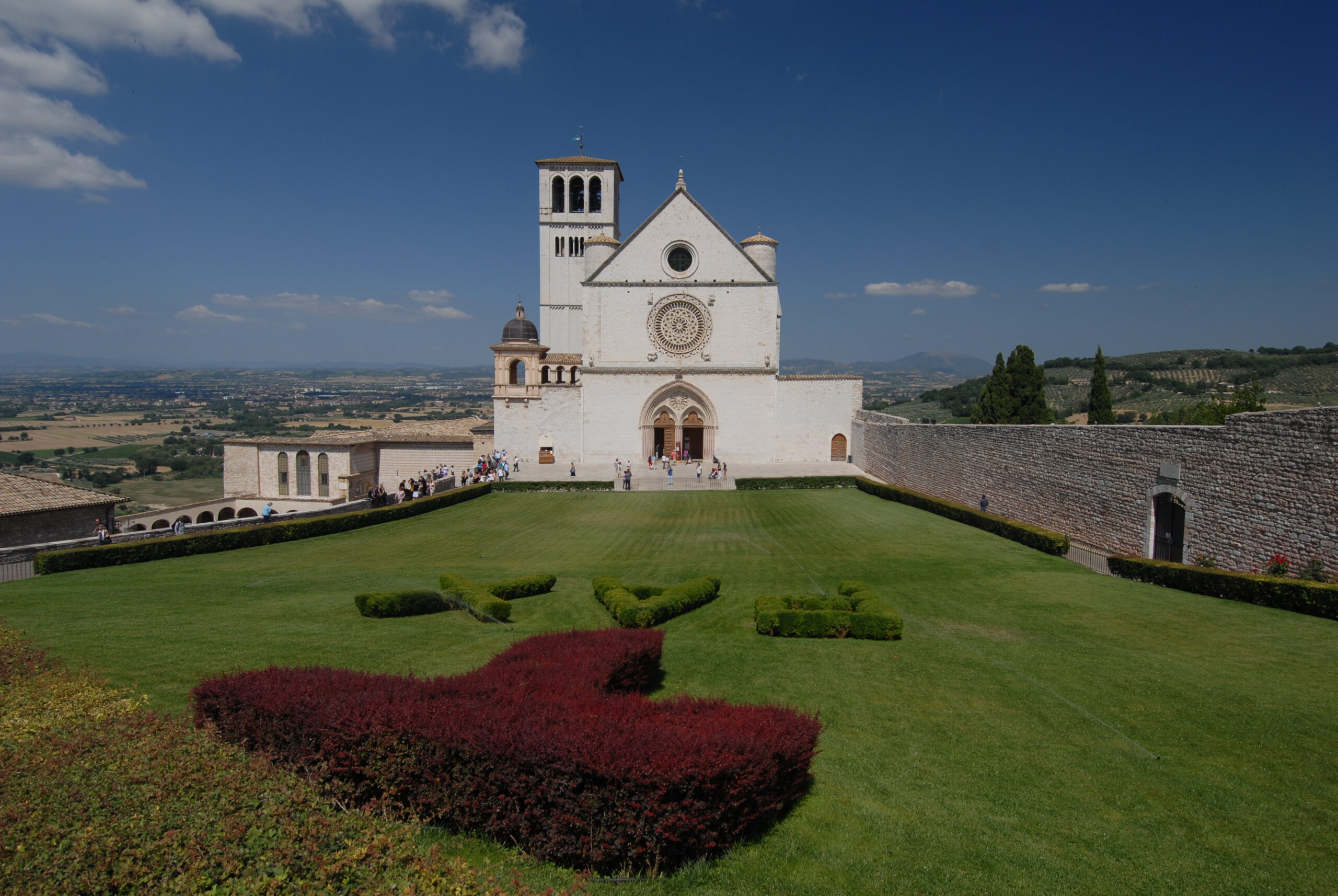
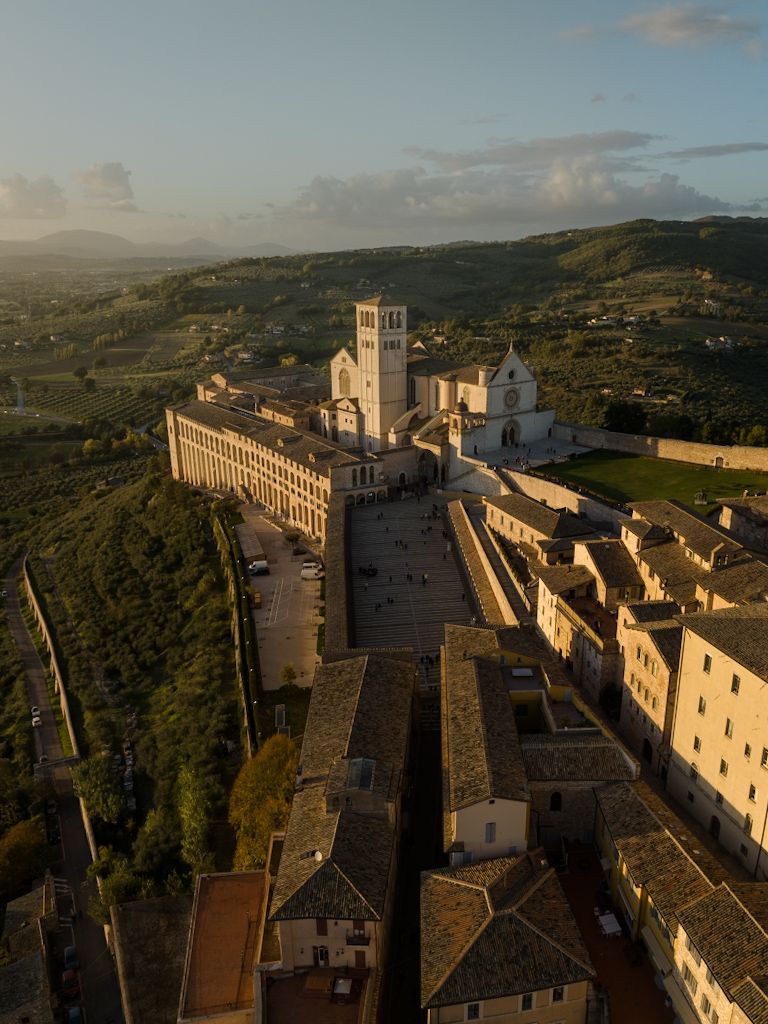
A Masterpiece of Architecture and Art
The Basilica is composed of two overlapping churches, reflecting two distinct historical and artistic phases. The lower church, built first, is characterized by Umbrian Romanesque style with Lombard influences, while the upper church embodies the elegance of French Gothic style, Italianized through its vibrant colors and intricate decorations.
Both churches are enriched with extraordinary decorative elements, offering pilgrims and visitors a unique experience with precious fresco cycles and magnificent stained glass windows. Among the most celebrated works are those by Giotto, Cimabue, Pietro Lorenzetti, Simone Martini, and Cesare Sermei, making the Basilica a true treasure chest of sacred art.
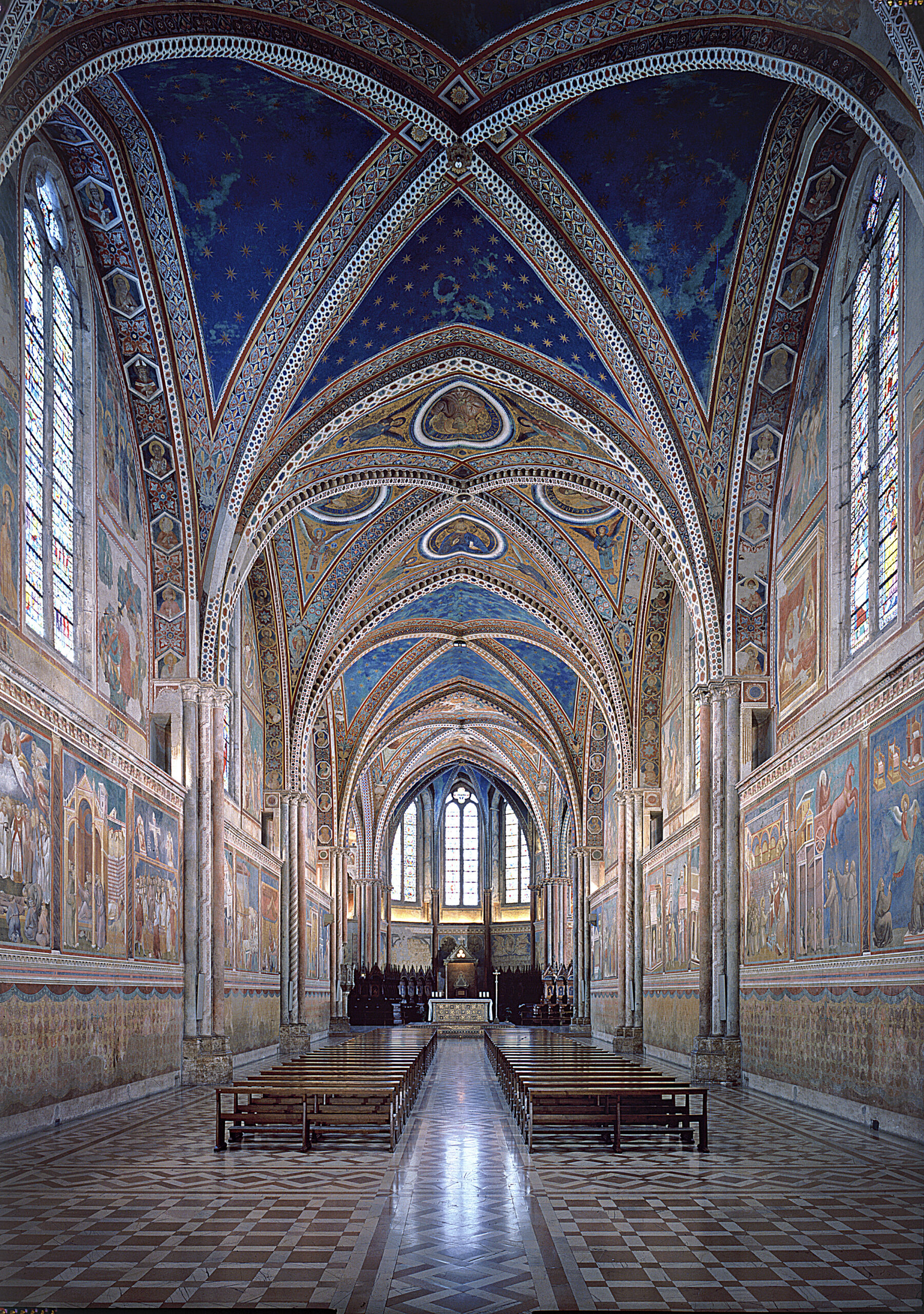
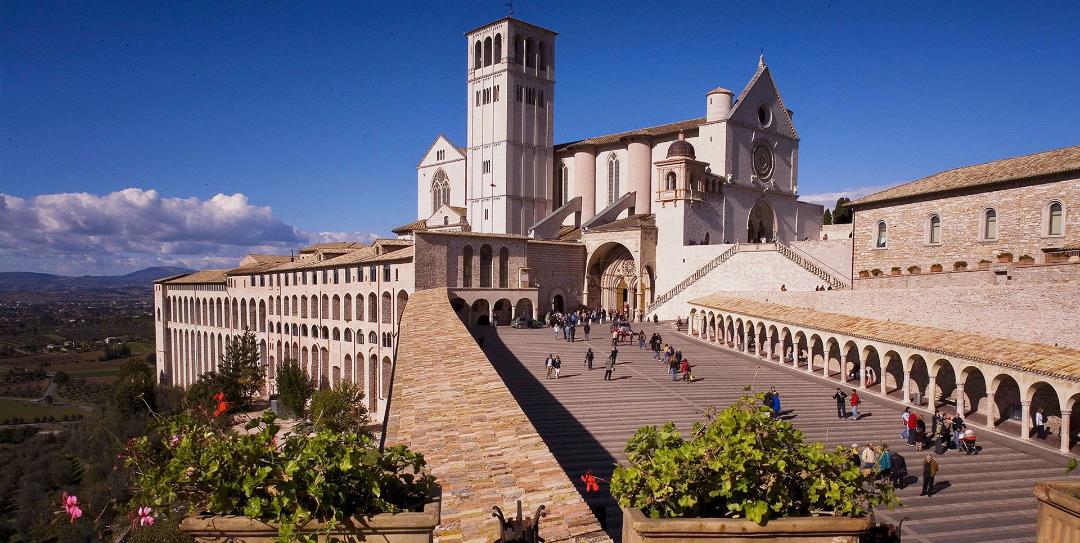
Surrounding Treasures
In front of the atrium leading to the entrance of the lower church lies the former Oratory of San Bernardino, built in the mid-15th century by Lombard craftsmen for the Franciscan Third Order. The apse of the Basilica, visible from the internal Cloister of Sixtus IV or the overlooking terrace, features a semicircular base transitioning into a polygonal upper section, flanked by two cylindrical pillars adorned with large Gothic windows.
A UNESCO World Heritage Site
In 2000, the Basilica of San Francesco, together with other Franciscan sites, was inscribed on the UNESCO World Heritage List, a testament to its universal cultural and spiritual significance.
